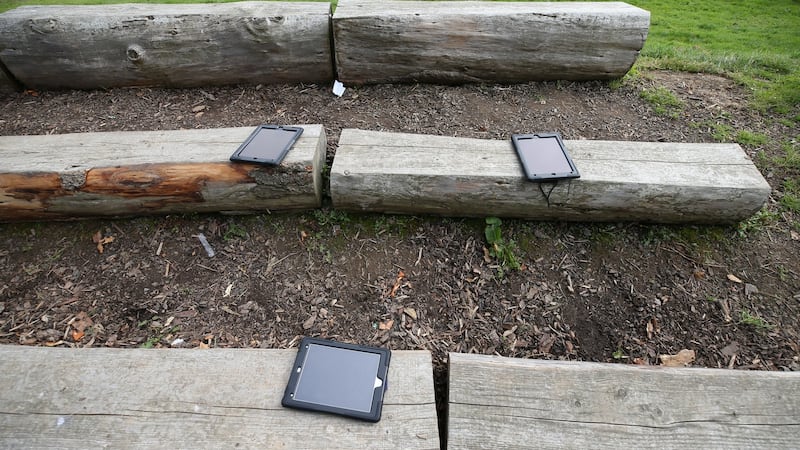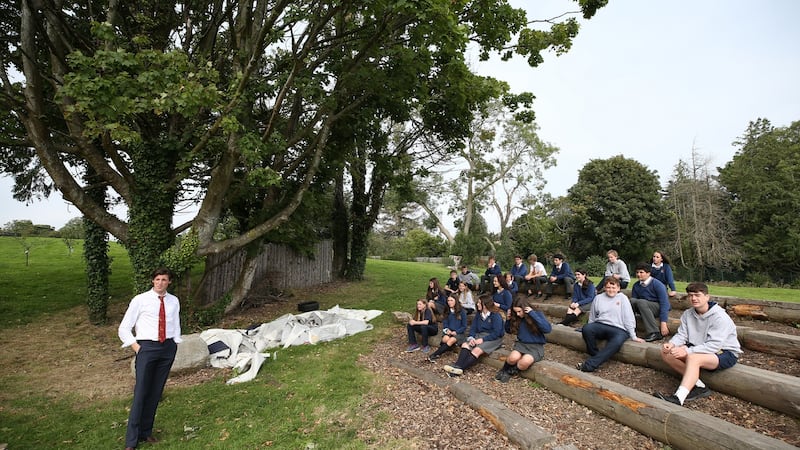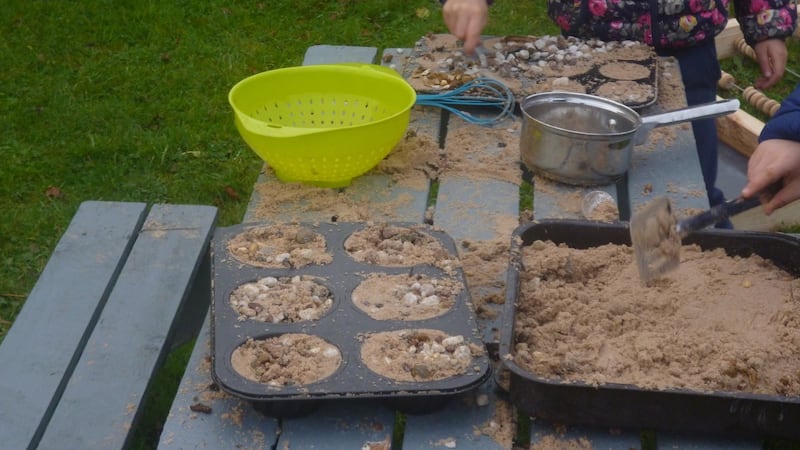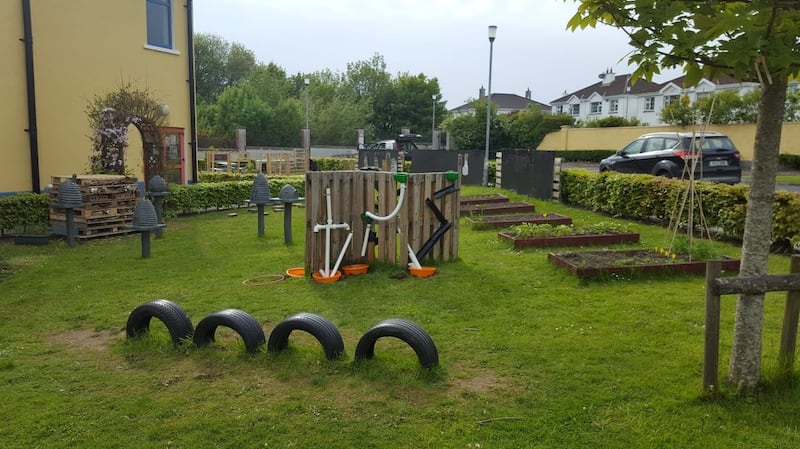“Learning outdoors provides more opportunities for risk-taking, problem-solving, moving the whole body, using the imagination, overcoming fears, engaging in teamwork and tolerating and integrating new sensory experiences.”
This quote from Angela Hanscom’s Balanced and Barefoot: How Unrestricted Outdoor Play Makes for Strong, Confident and Capable Children encapsulates the benefits of outdoor learning.
And, with the Covid-19 pandemic still in our midst, there has never been a better time to bring children outside to learn.
The Department of Education itself recently advised primary school teachers to bring pupils outdoors for engaging, creative and investigative learning opportunities that support social distancing, promote physical activity and help positive wellbeing.
And the special adviser on education policy to the Organisation for Economic Co-operation and Development, Andreas Schleicher, promotes learning outside the classroom. "I think the teachers who understand the relational and social aspects of learning . . . will be the ones who are successful," he told The Irish Times in a recent interview.

However, that’s easier said than done. How can teachers keep children’s attention by using the natural environment as a stimulus for learning rather than a distraction? What subjects should teachers choose to teach outdoors? And, what happens if it rains?
Here are some tips from outdoor learning experts who spoke at two recent webinars organised by the National Council for Curriculum and Assessment (ncca.ie/en/primary/supports-for-schools-during-covid-19/) and a masterclass on maximising your school grounds for learning and supporting children's wellbeing run by the UK charity, the Council for Learning Outside the Classroom.
1. Start small
"Open the door, go out and bring a box of chalks with you. Take your time and be patient," says Jackie Curley, junior infants teacher at Knocknacarra National School in Galway.
She admits that it took two years to complete the school’s outdoor classroom but the first steps are simply to use the curriculum as it is – outdoors.
“Young children can practise number formation using chalk. Leaves and sticks offer opportunities for sorting and making patterns and nature creations,” she says.
Older children can work on sentence structure, draw around a friend’s body and fill in the digestive system, make a map of the school buildings or discover the different habitats in the school grounds.
Siobhan Fitzgerald, principal of Eglish National School in Co Galway, says that a teacher with an interest in outdoor learning can start the conversation in the staff room.

“Don’t be afraid for a teacher or a special needs assistant to take the lead. Encourage colleagues to share outdoor lesson plans and model interest, enthusiasm, wonder, awe, love and care for the environment,” she advises.
2. Get parents on board
Engaging parents from the start is important as some parents see the outdoors for play but not for learning.
But experts in outdoor learning say that once parents see how happy their children are learning outdoors, they come on board.
“Keeping parents informed about what you are doing means they will be a lot happier with children coming home with muddy clothes,” says Curley.
Getting community support for building structures outdoors is also useful. For example, sinks and water will be needed for outdoor “mud kitchens” and old tyres from a local garage will make an excellent obstacle course for co-ordination and balance games.
Knocknacarra National School built vertical chalk boards using marine plywood overhangs to stop the surfaces getting wet.
“Vertical writing helps develop gross and fine motor skills in young children before they even sit down with pencils and crayons and paper,” says Curley.
Consider creating different zones such as a calming space, a social space, an adventurous space and a growing space.
“Focus on the space you have in your school grounds. Give the children time and space to explore the areas because they see potential in things we don’t. Step outside your comfort zone but keep it simple,” says Curley.
3. Ensure children are dressed for the outdoors
Make sure pupils are dressed for the outdoors if you are staying outdoors for a while. “Children love to climb and jump and have time to explore, investigate and run. They don’t feel the cold or mind getting dirty,” says Curley.
Outdoor learning experts agree that children aren't as bothered about the weather as adults and the Irish Forest Schools Association recommends children wear warm layers and have waterproof trousers, shoes and jackets.

"It's about resilience. Sometimes the most amazing things happen when the weather is awful. The outdoors is a very welcoming and inclusive environment and you can move a lot outdoors in a way that is less distracting and disruptive to others," says Joan Whelan, chairperson of the Irish Forest Schools Association.
Dr Orla Kelly, senior lecturer in social, environmental and science education at DCU's Institute of Education, adds: "It needs to become the norm that children are expected to come to school with a raincoat and be allowed to wear or change into welly boots as needed."
4. Integrate learning from across the curriculum
There are endless ways the lesson plan about the teddy who crash lands in the school grounds can be used to integrate maths (distance he travelled, time he took), English (stories he brings from foreign parts), geography (terrain he crossed and countries he travelled through), music (songs you can teach him) and much more.
“This lesson also helps make new students feel welcome by giving them ways to share their culture and local children to share stories about their locality,” says Kelly.
Fitzgerald says that many subjects can be integrated into outdoor learning.
“We’ve done local history projects by taking trips to the local graveyard, planted crocuses to remember Holocaust survivors, built a scarecrow to deter crows from the crocuses, had outdoor mindful moments and nature breaks, planted trees for National Tree Day and created an outdoor shelter for dance and karate classes,” she says.
5. Draw on all available resources
Check out materials for outdoor classroom day on May 20th (outdoorclassroomday.org.uk). Scroll through excellent examples for outdoor learning for all subjects on Learning Through Landscapes (ltl.org.uk). See a variety of citizen scientist activities for students on the National Biodiversity Data Centre (biodiversity.ie). Be inspired by schools using streets outside their schools on schoolstreets.org.uk and place-based learning with the Burren Beo Trust (burrenbeo.com). And consider signing up for training at the Irish Forest Schools Association (irishforestschoolassociation.ie).

6. Connect outdoor learning with indoor learning
Kelly says outdoor learning is only meaningful to children when it is connected to indoor learning.
“Outdoor learning disrupts the usual cultural expectations for both adults and children,” she says. “It has fewer rules and routines which means more playful child-initiated learning and egalitarian management of how time is spent.
“But, it must be connected to indoor learning by following up with reference books, art work, etc.”
Fitzgerald says that, over time, teachers will spontaneously connect outdoor learning with indoor learning.
“Outdoor learning promotes positive relationships between students and between students and teachers. You will naturally be using ever-increasing references to outdoors even when indoors,” she says.




















